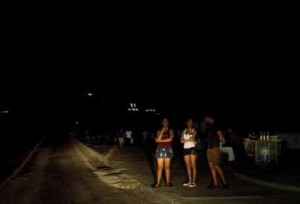
HAVANA, Cuba, October, www.cubanet.org — At the end of the ‘80s a neighbor whose name escapes me stuck a sign on his bike basket that said: “Friend of Perestroika.” One day I heard they had searched his house and taken him prisoner. That caused a lot of talk among the neighbors, because he was a Communist Revolutionary. That was the first time I’d heard of perestroika.
Also at that time a colleague of my husband, who had studied in the USSR and returned home with a Russian wife, spoke with great enthusiasm about the reforms, perestroika and glasnost. Because of this he had problems with the political police and lost his job. Later we didn’t know how that managed to get out of the country.
It was hard to get news about those events. Soviet magazines such as Sputnik, which might have information about them, stopped circulating. On the other hand, a great number of Cuban students and workers who were in the USSR didn’t return home for fear of being controlled by State Security, which tried to avoid, at all costs, the expansion of these new ideas. Many of them stayed in Europe later managed to settle in the United States. They were called “red worms.”
As these transformations occurred in the USSR, relations between the Cuban government and the socialist camp were deteriorating. With the fall of the Berlin Wall, at the end of 1989, most Cubans were excited because we were so eager for political change.
In those days, the opposition was growing, and taking off from the disappearance of Communism in Eastern Europe, engaged in a strategy of peaceful struggle to eliminate Communism in Cuba and to establish a democratic society with a market economy.
For more than twenty years, the Cuban people have confronted an economic and moral crisis. Despite this, it is very important to see how new generations look at the future from a different perspective, and are no longer silent about what they think.
With respect to this, the economist and opponent wrote, “The transition that is already taking place is the most important one, that is, in the hearts and minds of Cubans, frustrated and disillusioned with so many broken promises.”
A few days ago, a friend told me: “I’m not psychic, and predicting the date of change is difficult, but it is good to set short-term goals. That’s what encourages us to move forward and not lose momentum, so I like to imagine that by 2020 this dictatorship will be over.”

After thinking a bit, she continues, “When that happens, we will not have to steal to eat because our wages will be enough to live decently. We will travel along well-maintained streets, and at night we won’t have to be afraid to go out because they will be lit. The transportation problems will be resolved, perhaps with trains or, why not, with electric trams, that will circulate round the cities.
“I’ll take a stroll around the shops,” she adds, “which will have nice things in beautifully decorated windows. There will always be sales that the poor can take advantage of, and we will even be able to buy with easy payment. The houses and buildings and will be repaired and painted, and Havana will be even more beautiful than before 1959.
“In 2020 we will be better off than now, because anything is better than this. From time to time there will be real elections where we elect the president from among several candidates from different parties.
“My son, who lives in Miami, will come to see me more often, and, as in the past, we will have good relations with the U.S., where a large part of the Cuban people live. Some will come back and some wont.” She concludes, “Change will not be easy, but we will achieve it, and we will be here to see it.”
By Gladys Linares
From Cubanet, 30 October 2013
